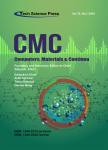Sports Events Recognition Using Multi Features and Deep Belief Network
作者机构:Department of Information Systems College of Computer and Information Sciences Princess Nourah bint Abdulrahman University P.O. Box 84428 Riyadh 11671 Saudi Arabia Department of Computer Science Air University Islamabad 44000 Pakistan Department of Computer Science Applied College King Khalid University Abha 61421 Saudi Arabia Department of Computer Science College of Computer Science and Information System Najran University Najran 55461 Saudi Arabia Department of Computer Sciences Faculty of Computing and Information Technology Northern Border University Rafha 91911 Saudi Arabia Department of Computer Engineering Korea Polytechnic University Siheung-si Gyeonggi-do 237 South Korea
出 版 物:《Computers, Materials and Continua》 (计算机、材料和连续体(英文))
年 卷 期:2024年第81卷第1期
页 面:309-326页
核心收录:
学科分类:08[工学] 0812[工学-计算机科学与技术(可授工学、理学学位)]
基 金:the MSIT(Ministry of Science and ICT),Korea,under the ICAN(ICT Challenge and Advanced Network of HRD)Program(IITP-2024-RS-2022-00156326) the IITP(Institute of Information&Communications Technology Planning&Evaluation).Princess Nourah bint Abdulrahman University Researchers Supporting Project number(PNURSP2024R440) Princess Nourah bint Abdulrahman University,Riyadh,Saudi Arabia.This research was supported by the Deanship of Scientific Research at Najran University,under the Research Group Funding program grant code(NU/RG/SERC/13/30)
主 题:extremal regions joint points Machine learning scalable keypoints silhouettes
摘 要:In the modern era of a growing population, it is arduous for humans to monitor every aspect of sports, events occurring around us, and scenarios or conditions. This recognition of different types of sports and events has increasingly incorporated the use of machine learning and artificial intelligence. This research focuses on detecting and recognizing events in sequential photos characterized by several factors, including the size, location, and position of people’s body parts in those pictures, and the influence around those people. Common approaches utilized, here are feature descriptors such as MSER (Maximally Stable Extremal Regions), SIFT (Scale-Invariant Feature Transform), and DOF (degree of freedom) between the joint points are applied to the skeleton points. Moreover, for the same purposes, other features such as BRISK (Binary Robust Invariant Scalable Keypoints), ORB (Oriented FAST and Rotated BRIEF), and HOG (Histogram of Oriented Gradients) are applied on full body or silhouettes. The integration of these techniques increases the discriminative nature of characteristics retrieved in the identification process of the event, hence improving the efficiency and reliability of the entire procedure. These extracted features are passed to the early fusion and DBscan for feature fusion and optimization. Then deep belief, network is employed for recognition. Experimental results demonstrate a separate experiment’s detection average recognition rate of 87% in the HMDB51 video database and 89% in the YouTube database, showing a better perspective than the current methods in sports and event identification. © 2024 The Authors. Published by Tech Science Press.



